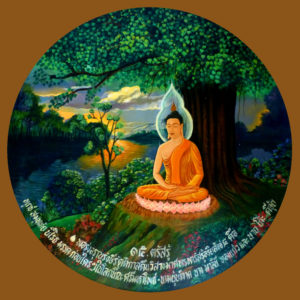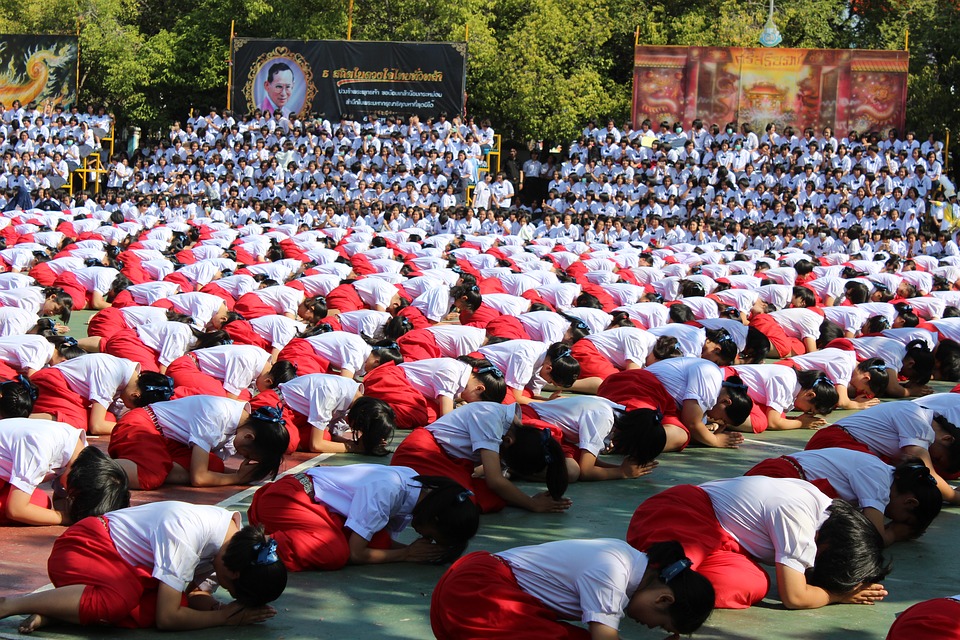There are three major schools of Buddhism. First of all, the school of ‘Theravada‘ (also known as Hinayana’) which is dominant in Southeast Asia and began in the first century BC. The second school of ‘Mahayana’ began over 2000 years ago. The third school of ‘Vajrayana’ was founded in the seventh century. Both ‘Mahayana’ and ‘Vajrayana’ can be found mainly in Japan, China, Tibet, and Korea. I shall discuss these three major schools and their beliefs, starting with the earliest school ‘Theravada’ and ending with the latest school of ‘Vajrayana’.
Theravada School
The School of ‘Theravada’ derives it’s named from the meaning of ‘old’ (‘Thera’) and ‘school’ (‘vada’) and is also known as ‘The teachings of the elders’. It teaches the Buddhist beliefs of how to achieve ‘Enlightenment’, ‘Nirvana’ and then possibly ‘Parinirvana’ by following the fundamental teachings of Siddhartha Gautama, later known as Buddha. He believed, that in order to achieve ‘Nirvana’, we must first escape ‘Samsara’, which is the cycle of birth and rebirth. In other words, you are reborn until you no longer have bad Karma and have been rewarded for your past and present actions. ‘Nirvana’ can be achieved in this lifetime, but if it is achieved in the afterlife it is generally referred to as ‘Parinirvana’ or ‘The final Nirvana’. The School of ‘Theravada’ follows Gautama’s thoughts and ideas in the form of the ‘Four Noble Truths’ and ‘Noble Eightfold Path’:
 The ‘Four Noble Truths‘ are (1) Life is suffering. (2) This suffering is caused by overcoming ignorance and attachment to earthly things. (3) You can only end this suffering by overcoming ignorance and attachment to earthly things. (4) You can overcome ignorance and attachment by following the ‘Noble Eightfold Path’.
The ‘Four Noble Truths‘ are (1) Life is suffering. (2) This suffering is caused by overcoming ignorance and attachment to earthly things. (3) You can only end this suffering by overcoming ignorance and attachment to earthly things. (4) You can overcome ignorance and attachment by following the ‘Noble Eightfold Path’.
‘The eightfold path’ gives a list of eight ideas which will guide each person to a greater understanding of this world and other world by having ‘Right Views’, ‘Right Intentions’, ‘Right Speech’, ‘Right Action’, ‘Right Livelihood’, ‘Right effort’, ‘Right contemplation’ and ‘Right mindedness’. In following this path, the Buddha described a way to end suffering. It is thought to be a way to free each person from attachments and delusions so that we gain an understanding of the truth about all things.
The ‘Theravada’ School teaches that the ‘Four Noble Truths’ and the ‘Noble Eightfold Path’ are the fundamental teachings of Buddhism in order for us to reach the state of ‘Nirvana’. They believe that the highest possible state of ‘Parinirvana’ is possible, but of course, know little about it.
Mahayana School
The School of ‘Mahayana’ (or the ‘Greater Vehicle’), by comparison, does not emphasize the attainment of ‘enlightenment’ as ‘Theravada’ does. Instead, it focuses on the ‘Sunyata’, which gives an understanding of self and the world by experiencing the being and nothingness of all things, in the search for enlightenment. Their followers are known as ‘Bodhisattva’s’, whose great aim is to help others achieve enlightenment and in doing so forsake their ‘Nirvana’. However, to attain ‘Bodhisattva’ is the highest level for a Mahayana Buddhist.
Vajrayana School
Finally, The School of ‘Vajrayana’ is also known as ‘The diamond vehicle’ or ‘Thunderbolt vehicle’ because it is thought to be an acceleration to achieve ‘enlightenment’ through ‘Tantric’ and teachings from mentor to student. ‘Vajrayana’ Buddhism has burgeoned out of ‘Mahayana’ Buddhism and teaches a combination of the ideas and thoughts of the ‘Theravada’ and ‘Mahayana’ schools. However, where the former schools claim enlightenment can be possible in one single lifetime through strict diligence and dedication, the ‘Vajrayana’ does not. The ‘Vajrayana’ school follows ‘Mahayana’ Buddhists in aspiring to the state of ‘bodhisattvic’. It follows the teachings of the Gurus, as (sort of ) secondary Buddhas and gives them the highest possible regard and respect.
SOURCES
www.buddhanet.net
Wikipedia encyclopedia
www.aboutbuddism.com





